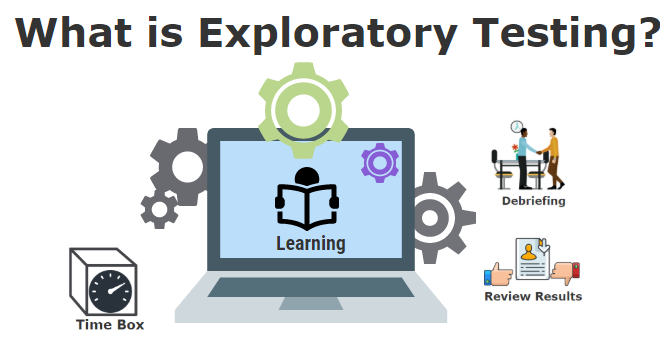Developing software in a dynamic environment requires producing high-quality results. Although scripted testing and other traditional testing approaches have long been the standard, they frequently aren’t able to keep up with the complex and fast changing nature of modern applications. Here is where exploratory testing becomes an essential strategy, combining expertise, intuition, and flexibility to find flaws and improve user experience efficiently.

Understanding Exploratory Testing
Exploratory testing is a method that combines test design with experiential learning. In contrast to scripted testing, which adheres to predetermined stages, exploratory testing gives testers the ability to understand the application, create test cases, run tests, and instantly assess the results. Instead than strictly adhering to a script, you should explore the program, intuitively probe its features, and look for possible problems that automated tests might overlook.
Key Characteristics of Exploratory Testing:
- Adaptability: Based on in-the-moment observations and insights obtained during testing, testers might modify their methodology.
- Creativity: Promotes innovative problem-solving techniques and creative thinking to find hidden flaws and edge cases.
- Efficiency: Through repeated testing, efficient feedback loops and early defect discovery are made possible.
- Expertise: Relies on domain knowledge and tester experience to successfully direct testing efforts.
- Freedom: Allows the user to freely investigate the program from various angles, simulating actual user interactions.
Benefits of Exploratory Testing
1. Agility and Flexibility:
Exploratory testing provides agility to adjust to changing needs and quicker development cycles, ideally aligning with Agile and DevOps techniques. By offering quick feedback on new features and modifications, it enhances continuous integration and continuous deployment (CI/CD) workflows.
2. Comprehensive Test Coverage:
Exploratory testing reveals both expected and unexpected behaviors by letting testers freely explore the program. Early detection of important faults and usability concerns in the development lifecycle is ensured by this all-encompassing methodology.
3. Realistic User Perspective:
Testers focus on usability, user experience (UX), and edge cases that scripted tests can miss by approaching the application from the viewpoint of the user. This aids in producing software that satisfies user expectations and operates correctly.
4. Efficient Bug Discovery:
Because exploratory testing is dynamic, testers can find intricate flaws that scripted tests might miss. In order to quickly fix problems, it promotes proactive problem-solving and cooperation between testers and developers.
5. Continuous Improvement:
Exploratory testing promotes a continuous improvement culture in development teams by means of iterative testing and continual learning. Based on comments and understandings from every testing session, testers improve their testing methods.
Implementing Exploratory Testing
1. Define Testing Objectives:
learly state the emphasis areas, risk assessment, and expected results of exploratory testing sessions.
2. Plan and Prepare:
Allow enough time and resources to do exploratory testing. Make that the testing environments, tools, and documentation are available to the testers.
3. Execute Testing Sessions:
Hold exploratory testing sessions in which testers are free to move about the application, record their findings, and work with stakeholders as necessary.
4. Document Findings:
Record and document test results, including flaws, problems with usability, and recommendations for improvement. Feedback like as this is really helpful for stakeholders and developers.
5. Iterate and Improve:
Based on input and lessons gained, iterate and improve exploratory testing procedures continuously. To improve the efficacy of testing, encourage team members to collaborate and share expertise.
Conclusion
Exploratory testing, which emphasizes flexibility, creativity, and real-time learning, is a paradigm shift in software quality assurance. Giving testers the freedom to investigate software programs from many perspectives increases the possibility of finding serious flaws and raises the standard of the program as a whole. Exploratory testing becomes an increasingly important technique for efficiently accomplishing quality assurance goals when organizations adopt Agile methodologies and aim for faster release cycles. Accept the challenge of exploratory testing to increase the success of your software projects, uncover hidden insights, and provide better user experiences.
